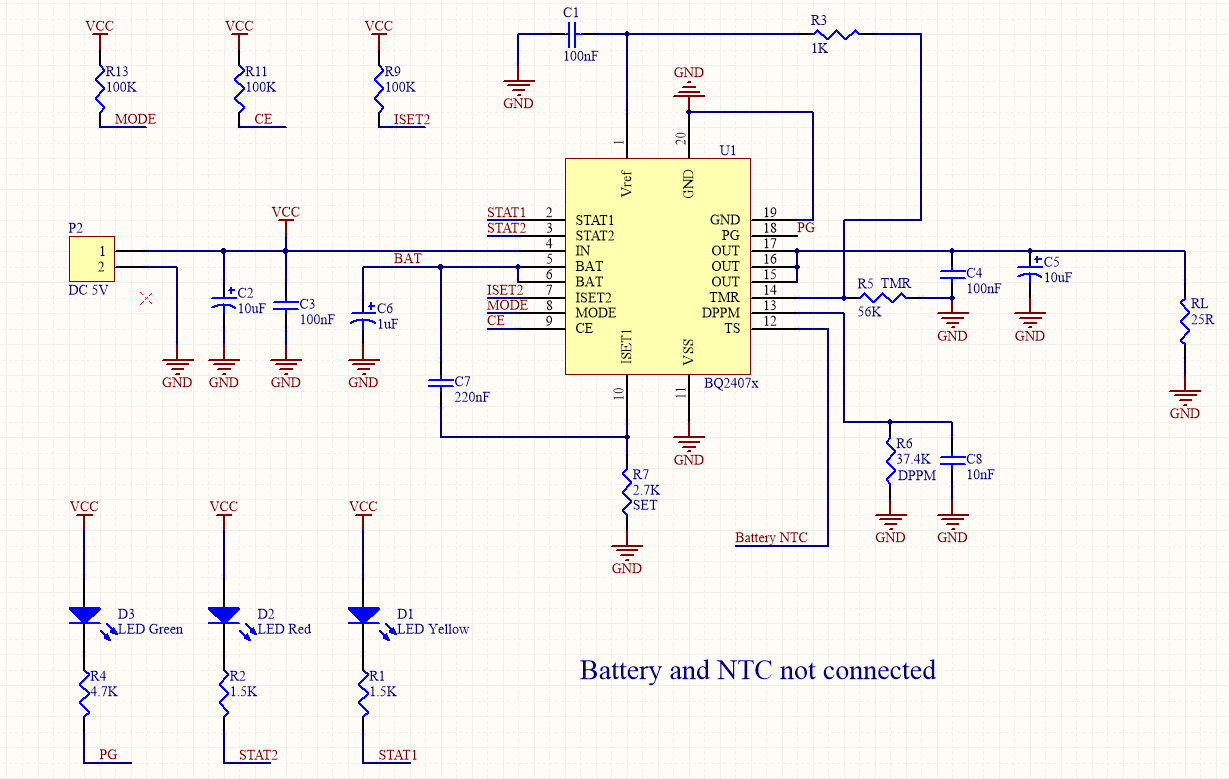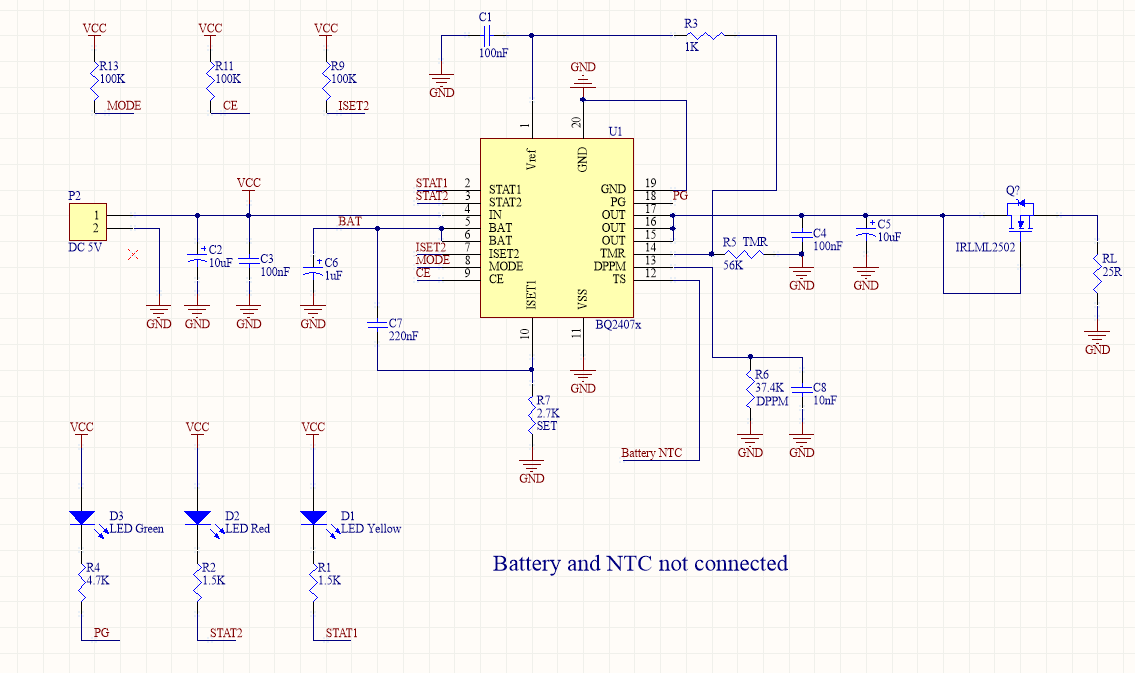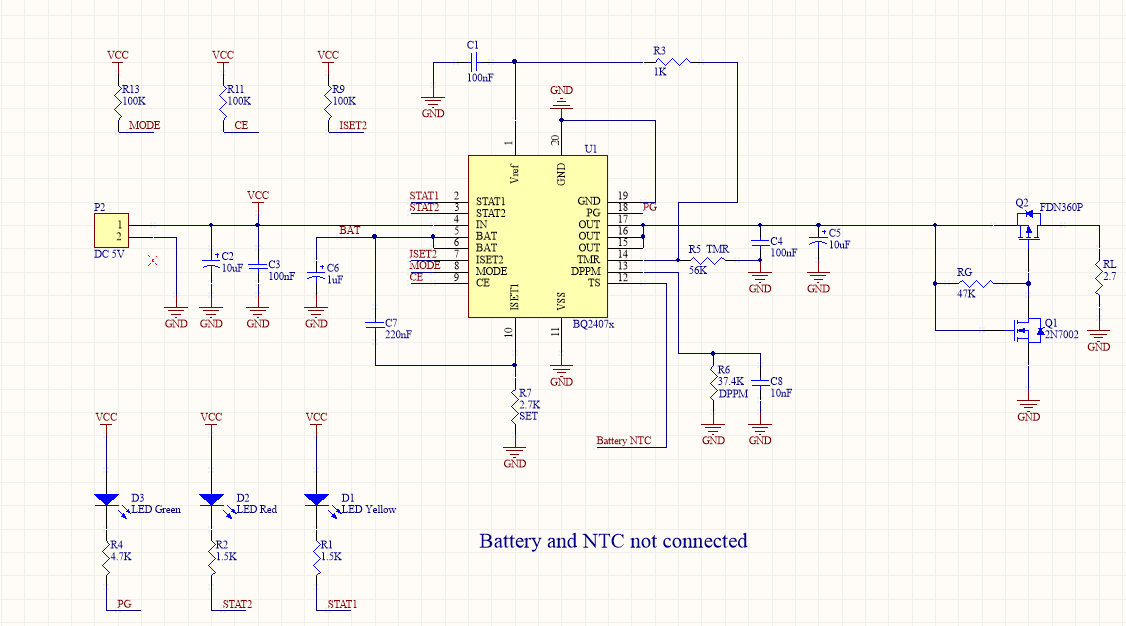Hi,
I have trouble with the charger. I'm testing with the BQ24070
Schematic:
* I have 5V at the Input
* 25 ohm resistor Load at the output.
* No battery Connected.
Problem:
When I power the BQ24070, led PG is on and other are off. At the output it should be 4.4V, but instead there is just 0.25V
So my conclusion is that the device is on Short-Circuit protection mode.
I add a 10nF capacitor to DPPM pin, but the problem still there (when i add battery to circuit, it's work fine but not work when battery is not connected.
How can I skip from short circuit protection, when i have not battery in circuit and i can not disconnect the load from circuit.
thanks for your reply.





